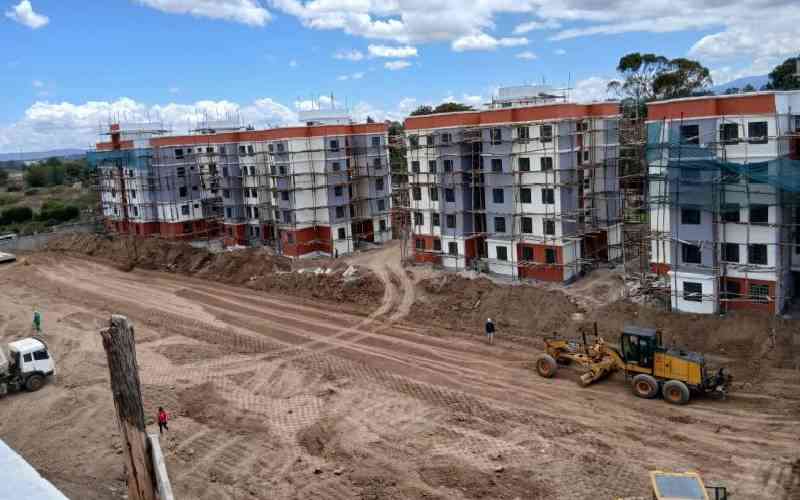The Affordable Housing Programme under President William Ruto’s administration is reshaping Kenya’s urban and rural landscapes. As one of the country’s most ambitious infrastructural undertakings, the initiative is not only bridging the housing gap but also driving economic growth, creating employment opportunities, and revitalizing real estate in both urban and rural areas.
Across the Mt. Kenya region, the government’s affordable housing projects are nearing completion, signaling a major step toward accessible homeownership. Despite early skepticism and debates on policy implementation, the overwhelming demand for these housing units underscores their significance. Reports indicate that most projects, including those in Nanyuki, Gichugu, and Makeji, are fully booked, with residents eagerly anticipating their completion.
The Nanyuki housing project, comprising 200 units, is already 95% complete and oversubscribed. In response to the high demand, the government has initiated plans for a second phase. Governor Joshua Irungu, who recently inspected the project, hailed it as a turning point for the region, emphasizing its potential to uplift living standards and bolster the local economy. Complementing the housing project is the construction of Nanyuki’s new market, set to enhance trade and support small businesses.
Beyond providing shelter, the affordable housing programme is fueling economic activity through the demand for building materials. The construction of these units has generated business for suppliers of cement, steel, and timber, among other materials. These industries, in turn, create more jobs, ensuring the benefits of the housing programme extend far beyond direct beneficiaries.
The employment opportunities arising from these projects are substantial. Thousands of young Kenyans have found work in construction, helping reduce crime and unemployment in many regions. Central Director of the Affordable Housing Programme, Albert Gakuru, notes that the initiative has significantly engaged the youth, drawing them away from unlawful activities and into meaningful employment.

Moreover, the housing projects indirectly support informal businesses. Food vendors, transporters, and small-scale suppliers have thrived alongside the construction sites, benefitting from the increased economic activity. As laborers and professionals work on-site, their demand for meals and daily necessities has provided a financial boost to local businesses.
The impact of affordable housing extends to rural areas, where real estate is undergoing a transformation. Traditionally, homeownership in rural regions was dominated by informal settlements and self-built structures. However, with government intervention, modern, well-planned housing estates are emerging, enhancing property values and attracting investors.
In Murang’a County, the government has also invested in economic stimulus markets, such as Kangari and Muthithi, which are in the final phases of completion. These modern markets will create additional business opportunities for traders, strengthening the local economy. Similar developments in Kirinyaga County, notably in Gichugu, Kianyaga town are expected to revitalize commerce and create sustainable economic hubs.
Government leaders, including Housing Principal Secretary Charles Hinga, affirm that these housing and market projects will significantly improve living conditions across the country. By integrating affordable housing with modern infrastructure, the government is fostering urbanization in previously underdeveloped areas, setting the stage for long-term economic progress.
As Kenya continues its journey toward affordable homeownership, the ripple effects are evident in job creation, economic expansion, and countryside transformation. What started as a housing solution has evolved into a nationwide movement reshaping communities and securing a prosperous future for generations to come.










